5 Nights / 6 Days
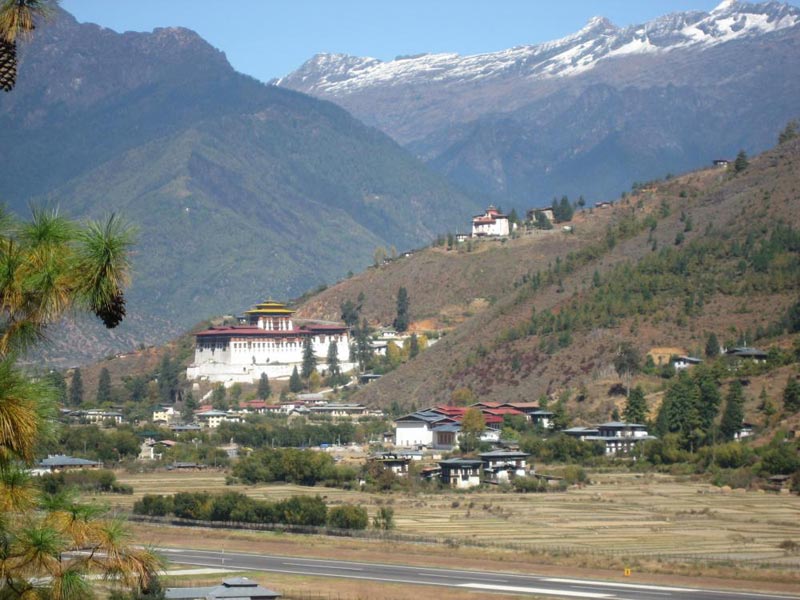
Tips To Guide
Expenses Of Personal Nature10-1028-05
Arrive In Paro Arrival You Will Be Greeted By Our Representative And Transferred To Your Hotel Rimpung Dzong The Paro Dzong Is Probably Bhutan'S Best Known And Most Iconic Dzong. This Is Probably The First Building You Will Notice When You Land At Paro International Airport And Will Probably Be Your First Memory Of Bhutan. The Imposing Dzong Is Perhaps The Finest Example Of Dzong Architecture Existing The World Today, The Massive Buttered Walls Of The Fortress Dominate Over The Valley. The Rinpung Dzong'S Names Translates To The " Fortress On A Heap Of Jewels ".
The Fortress Was Constructed In 1644 By Shabdrung Ngawang Namgyal On The Foundations Of An Ancient Monastery. The Fort Played A Crucial Role In The History Of The Paro Valley As The Dzong Helped Keep The Marauding Tibetans Away From The Paro Valley.
The Dzong Was Hit By An Earthquake In 1897 But Survived Unharmed, But A Fire In 1907 Ended Up Causing Severe Damage To The Dzong.
The Dzong Is Built On A Steep Hill Along The Banks Of The Paro Chu River. The Front Part Of The Dzong Is Home To The District Administration While The Other Courtyard Towards The Rare Houses The District Monk Body.
The Approach Toward The Dzong Is Through A Traditional Covered Bridge Called The Nemizam. A Paved Stone Path Runs Alongside The Imposing Outer Walls Of The Structure. The Valley'S Annual Springtime Religious Festival Called The Paro Tsechu Is Organized Each Year In The Courtyard Of The Dzong And Is Attended By Tourists From All Over The World.
Ta Dzong ( National Museum )
The National Museum Of Bhutan Is Housed Inside The Six Storied Circular Ta Dzong. The Ta Dzong Is A Medieval Watch Tower Situated Above The Rimpung Dzong. The Ta Dzong Was Constructed In 1656 With A Purpose To Give Advance Warning To The Paro Dzong In Case Of An Approaching Army, In Fact The Word Ta Means 'To See' In Dzongkha. The Future First King Was Imprisoned Here For A Brief Period In 1872. In 1968 The Ta Dzong Was Converted Into The National Museum Of Bhutan. The Museum Houses A Priceless Collection Of Textile, Costumes, Paintings, Appliqué, Wooden Handicrafts, Weapons, Armour And Jewellery. There Is A Small Section Dedicated To The Natural History Of Bhutan. There Is A Small Chapel On The Top Of The Building With Icons Representing Himalayan Buddhist Traditions. Overnight In Paro
The Tashichho Dzong Is A Buddhist Monastery Cum Fortress At The Northern Edge Of Thimphu The Capital City Of Bhutan. The Dzong Was Built On The Western Bank Of The River Wang Chu, And Has Historically Served At The Seat Of The Druk Desi Or The Dharma Raja Of Bhutan’S Government. After The Kings Assumed Power In 1907 This Post Was Combined With That Of The King And Thimphu Severed As The Summer Capital Of The Kingdom Before Becoming The Full Time Capital Of Bhutan.
The Original Thimphu Dzong (The Dho-Ngyen Dzong) Is Said To Have Been Constructed In 1216 By Lama Gyalwa Lhanangpa. And Was Later Taken Over By Lama Phajo Drukgom Shigpo Before The Dzhong Was Conquered By Shabdrung Ngawang Namgyal, Who Found The Dzhong To Be Too Small And Expanded It To What Is Now Known As Thetashichho Dzong Is Also Called The "Fortress Of Glorious Religion." It Was Erected In 1641 And Was Subsequently Rebuilt By King Jigme Dorji Wangchuck In The 1960S.
Folk Heritage Museum.
The Folk Heritage Museum Was Open To The General Public In 2001 Upon Completion. It Treasures Troves Of Culture And Rich Bhutanese Heritage Provide Rich Insights Into The Bhutanese Ethos. Try To Schedule Your Visit During The Morning Hours Since The Museum Is Less Crowded At That Time And There Is Plenty Of Sunlight To Go Around.
The Folk Heritage Museum Is Housed In A Replica Traditional Bhutanese House Learn First-Hand About Bhutan’S Rich Cultural Traditions, Its Deeply Rooted Heritage Which Spans Thousands Of Years And The Bhutanese Way Of Life. The Tour Of This Almost Living Museum Will Also Give You A Glimpse Onto How Many Rural Folk Of The Country Live Today Following The Ancient Bhutanese Ways.
National Textile Museums:
The Second Important Museum That Also Opened Its Doors In 2001 Is The National Textile Museum Of Bhutan. During A Trip To This Museum You Will Get An Up Close And Personal Experience Of The Living National Art Of Weaving. The Changing Exhibitions At The Museum Will Introduce You To The Major Weaving Techniques That The Weavers Employ To Make These Beautiful Fabrics. It Also Gives You A Chance To See The Various Styles Of Dressing Of The Men And Women From Different Parts Of Bhutan. The Museums Exhibits Follow 6 Major Themes :
Wrap Pattern Weaves
Weft Pattern Weaves
Role Of Textile In Bhuddism
Historical Achievements In Textile
Textiles Made From Different Indigenous Fibers
The Royal Textile Collection.
National Memorial Chorten
The National Memorial Was Built By Bhutan'S Third King, H.M. Jigme Dorji Wangchuck Who Is Also Known As The "Father Of Modern Bhutan." He Wanted To Erect A Monument Carrying The Message Of World Peace And Prosperity. However, He Was Unable To Give Shape To His Idea In His Lifetime Due To Pressures Of State And Other Regal Responsibilities. After His Untimely Demise In 1972, The Royal Family And Cabinet Resolved To Fulfill His Wishes And Erect A Memorial That Would Perpetuate His Memory And Also Serve As A Monument To Eternal Peace, Harmony And Tranquility The National Memorial Chorten Was Gifted To The Nation On 28 July, 1974. The Exquisite Wall Paintings And The Delicately Carved Statues Reflect Deep Insights Into Buddhist Spirituality And A Rich Tradition Of Prayer And Learning.
The National Memorial Chorten Is Known As The ‘Most Visible Religious Landmark In Bhutan’.
The Chorten Was Consecrated By His Holiness, The Late Dudjorn Rinpoche. Unlike Other Stupas The Chorten Is Not A Shrine For The Mortal Of The Late King. The Chorten On Contains A Photograph Of The King In Full Ceremonial Attire. The King Had Intend For The Choten To Be - A Chorten That Represents The Mind Of Buddha.
The National Memorial Chorten Is Located In The Center Of The Capital City, Thimphu And Is Designed Like A Tibetan Style Chorten. The Chorten Is Patterned Of The Classical Stupa Design With A Pyramidal Pillar Crowned By A Crescent Moon And Sun. One Of The Most Distinct Features Of The Chorten Is Its Outwards Flaring Rounded Part That Makes The Chorten Look More Like A Vase Rather Than The Classical Dome. The Interior Of The Chorten Has A Large Number Of Paintings Of Tantric Deities, In Explicit Sexual Poses That Sometimes Can Be A Little Disconcerting To Visitors. Overnight In Thimphu
Today Early Morning After Breakfast, We Will Visit To Punakha Via Dochula Pass. We Will Stop Over For Tea At Dochula (3,150 M), Where On A Sunny Day, You Can Get Stunning Views Of The Himalayan Ranges. The Dochu La Pass Is Probably The Best Known Mountain Pass In Bhutan. Located At An Altitude Of 3150 Meter Above Sea Level, The Dochu La Pass Is About 30 Kilometer Away From The Capital City Thimphu And The Road To Punakha.
On A Clear Day The Pass Offers Visitors A Spectacular View Of The Majestic Eastern Himalayan Ranges. A Cup Of Hot Coffee Or Tea At The Pass Has Almost Become Part Of Tradition For People Travelling To And Fro From Punakha To The Capital City.
There Is A Small Cafeteria At The Pass That Offers A Chance For Travelers To Enjoy A Hot Beverage Or A Snack, It Is Located Just Off The Road And Overlooks The Pass And Is An Ideal Place To Sit Back, Relax And Enjoy The View. Another Striking Feature At The Pass Are The 108 Druk Wangyal Khangzang Chortens, That Were Built For The Well-Being Of All Sentiment Beings On Earth. The 108 Chorten Were Built As A Tribute To The Kings Of Bhutan For Their Selfless Service And Leadership They Offer To The People Of Bhutan. These Stupas Or Chortens Also Represent The Peoples Love, Appreciation And Loyalty Towards The Country’S King. Then We Will Drive Towards Punakha And Visit:-
Chimmi Lhakhang
The Chimi Lhakang Or The Chimmy Lhakhang Is A Bhuddhist Monastery Located In The Punakha District Of Bhutan. The Monastery Stands On A Small Hill Close To The Village Of Lobesa And Was Constructed In 1499 By Ngawang Choegyel, The 14Th Drukpa Heirarch.
The Temple Is Very Deeply Connected To The Legends Of Saint Drukpa Kinley Also Known As The Devine Madman. It Has Been Said That The Demon Of Dochu-La With A Magic Thunderbolt Of Wisdom In Imprisoned Him In A Rock Close To The Temple. Drukpa Kuenley Is Called The Divine Madman Due To His Unorthodox Methods Of Teaching Via Songs, Humor And Sometimes Bizarre And Shocking Behavior With Deep Sexual Overtones. You Might Be Shocked To See That The Temple Houses A Number Of Wooden Phalluses That The Lama Had Brought With Him From Tibet. Pilgrims Who Visit The Monastery Receive The Blessing By Being Struck On The Head With A Ten Inch Wooden Phallus (Erect Penis). The Symbol Of An Erect Penis Is Said To Ward Off Evil.
The Monastery Is Also Known As The Temple Of Fertility And Is Visited Not Only By The Bhutanese But Women From Countries As Far As Japan And United States To Receive A Special Blessing That Can Help These Women Conceive Children. These Women Receive The Blessing By Getting Struck On The Head With A 10 Inch Wooden/ Ivory Phallus.
The Temple Can Be Accessed By Undertaking A Short 20 Minute Walk Across The Rice Fields From The Nearest Road Head. The Lhakhang Is A Square Shaped Building With A Golden Spire On Its Roof. The Temple Has Many Rows Of Prayer Wheels And The Temples Exterior Has Embedded Slate Carvings Of Various Buddhist Saints.
Near The Temples Entrance There Is A Small Chorten That Marks The Spot Where The Lama Subdued The Demon Of Dochu La.
Punakha Dzong
The Punakha Dzong Or The Pungtang Dechen Phortang Dzong Is Located At The Confluence Of The Mo Chhu And The Po Chhu River, Combine To Form The Puna Tsang Chu Which In Turn Is A Tributary Of The Mighty Brahmaputra River. The Dzong Was Constructed By Sahbdrung Ngwang Namgyal Wangchuck In 1638 On The Exact Spot As Prophesized By The Guru Rinpoche Some 800 Years Ago.
According To The Prophecy Of Guru Rinpoche -A Person Named Namgyal Will Arrive At A Hill That Looks Like An Elephant”. And Lo Behold! Shabdung Ngawang Namgyal Found That The Peak Of The Hill Was In The Shape Of An Elephant’S Trunk And Built The Dzong At That Very Spot. Another Legend Associated With The Dzhong Is That Of Zowe Palep, The Architect Of The Dzong Received Vision Of The Dzong In His Sleep. This Vision Got Imprinted In The Architects Mind And Enabled Him To Construct The Dzong Without Putting His Plans To Paper.
The Punakha Dzong Is The Second Largest And The Second Oldest Dzong In Bhutan. The Dzong Is Home To Some Of The Most Sacred Relics Of The Drukpa Kagyu School Of Buddhism; It Is Also Home To The Sacred Mortal Remains Of Shabdrung Nagawang Namgyal And Trenton Pema Lingpa The Great Treasure Discoverer Of Bhutan. The Punakha Dzong Has Also Served As The Of Capital Bhutan Till 1955 Before The Capital Was Moved To Thimphu. The Dzhong Is Still The Winter Residence Of The Je Khenpo (Chief Abbot) And The Central Monastic Body. Overnight In A Hotel In Punakha
After Breakfast You Will Drive To Gangtey Visit Gangtey Goemba. The Gangtey Monastery Or The Gangtey Goempa Is An Important Monastery / Temple Associate With The Nyingmapa School Of Buddhism. The Monastery Is Located In The Wandue Phodrang Dzongkhag In Central Bhutan. The Gangtey Monastery Is Situated In The Picturesque Phobjikha Valley, Which Is Also Renowned For Being The Winter Home Of The Rare Tibetan Black Necked Cranes. The Monastery Was Established In 1613 By Peling Gyalse Rinpoche, The Grandson Of Trenton Pema Lingpa The Great Treasurer Discoverer.
According To A Story During A Visit To The Phobjikha Valley, Trenton Pema Lingpa Foretold The
People That One Day His Descendants Will Construct A Monastery On The Hills Surrounding The Valley And Make It The Seat Of The Peling Tradition. The Present Ruling Dynasty Of Bhutan Is Descendant Of The Great Trenton Pema Lingpa. The Monastery Is A Complex Of Five Temples That Surround A Main Central Tower. The Main Hall Of The Monastery Is Built In Tibetan Style Architecture And Is Made Completely Out Of Wood With Its 8 Main Wooden Pillars Considered To Be The Largest In Bhutan. Between 2002 And 2008 The Monastery Underwent A Complete Renovation / Restoration.The Monastery Was Consecrated By The Present Day Reincarnation Of The Pema Lingpa In October 2008. The Monastery Has A Very Close Connection To The Royal Family Of Bhutan.
Phobjikha Valley
The Phobjikha Is A Wide Glacial Valley Located In Close To The Gangtey Monastery. The Phobjikha Valley Is The Winter Home Of The Rare Black Necked Cranes That Migrate From Tibet From The Arid Plains Of Tibet To Roost In The More Comfortable Climate Of The Phobjikha Valley. The Valley Is At An Altitude Of 2900 Meters Above Sea Level And Experiences A Much Lighter Winter As Compared To The Harsh Extremes Of Tibet. A Part Of The Valley Lies In The Black Mountain National Park. There Are 2 Rivers That Flow Through This Valley Called The Nakay Chu And The Gay Chu. According To Legend It Is Said That The Rivers Represent A Serpent And A Wild Boar.
Once Upon A Time There Was A Race Between The Two To Determine Whether People Can Grow Rice In The Valley Or Not, If The Serpent Won Then The People Of The Valley Could Grow Rice But If The Boar Won, Then Rice Could Never Be Cultivated In The Area.
Eventually The Serpent Lost And Till Date Rice Is Not Grown In The Phobjikha Valley. While Visiting The Phobjikha Valley One Must Take Time Out To Visit The Black Necked Crane Information Centre, The Centre Is Located At The Edge Of The Main Forest Are Along The Road And Can Be Easily Accessed. The Centre Has An Observation Deck That Is Equipped With A High Power Telescope That Gives Visitors A Chance To Spot Some Cranes. The Information Center Has A Display That Offers An Insight In To The Natural And Cultural History Of The Valley.
After An Early Breakfast You Will Drive To Paro. In The Afternoon You Will Hike To Taktsang (Tiger'S Nest) Monastery, Which Is Bhutan'S Most Famous Monastery. It Is Perched On The Edge Of A Steep Cliff, About 900 Meters Above Paro Valley. The Hike To Reach The Viewpoint To The Monastery Makes For A Nice Half-Day Excursion. In The Evening You Can Visit A Traditional Farmhouse And, If You Wish, Enjoy A Typical Bhutanese Dinner. Overnight In Paro.
Departure
| No of pax | Age Limit | Price per pax (Rs) |
|---|---|---|
| Adult | Above 12 years | $ 1500 / Adult |
We are a Bhutan Government Licensed Tour Operator and the Member of the Association of Bhutanese Tour Operators (abto). We are Providing Tour Operator Services. Read More...
1,35,750 PP
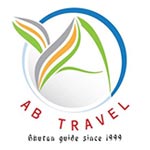
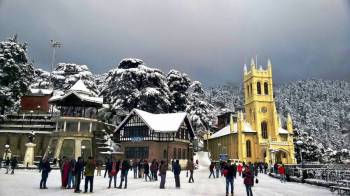 6D/5N
6D/5N
 6D/5N
6D/5N
 6D/5N
6D/5N
 6D/5N
6D/5N
Chardham Yatra By Helicopter Tour
Yamunotri - Gangotri - Kedarnath - Badrinath
 6D/5N
6D/5N
Srinagar,Pahalgam,Gulmarg,Sonamarg,Srina..
Srinagar - Pahalgam - Gulmarg - Sonamarg
 6D/5N
6D/5N
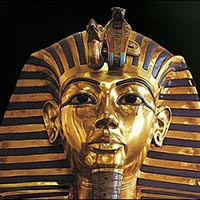 6D/5N
6D/5N
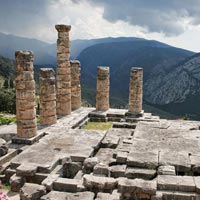 6D/5N
6D/5N
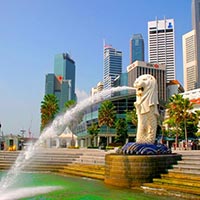 6D/5N
6D/5N
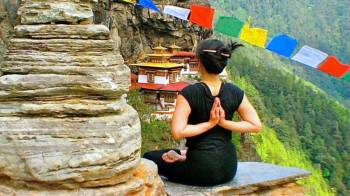 7D/6N
7D/6N
 15D/14N
15D/14N
Himalayan Odyssey 14 Nights - 15 Days Tour
Thimphu - Paro - Wangdue Phodrang - Punakha - Mongar - Bumthang - Trashigang
 10D/9N
10D/9N
 8D/7N
8D/7N
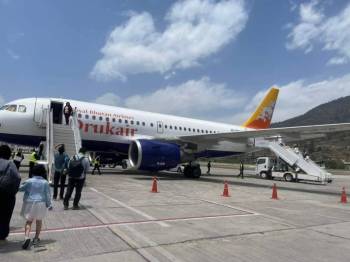 16D/15N
16D/15N
15 Nights/16 days Merak Sakteng Trekking..
Thimphu - Paro - Punakha - Bumthang - Trashigang
 10D/9N
10D/9N
Thimphu - Paro - Wangdue Phodrang - Punakha - Trongsa - Bumthang
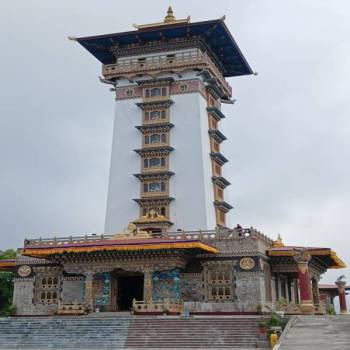 7D/6N
7D/6N
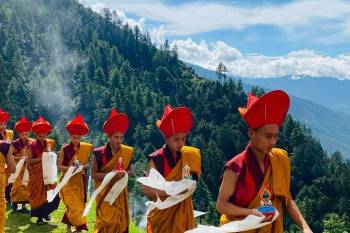 5D/4N
5D/4N
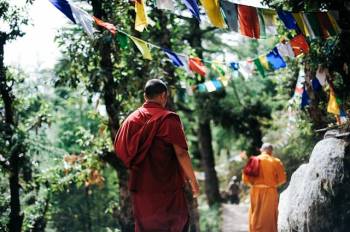 9D/8N
9D/8N
Mystical Himalayas Nepal - Bhutan Discov..
Pokhara - Chitwan - Thimphu - Paro - Patan